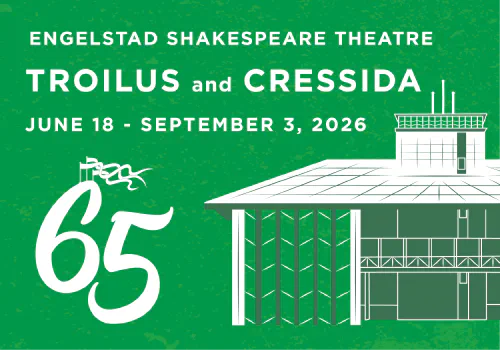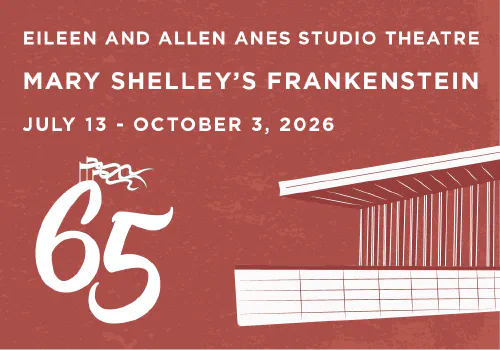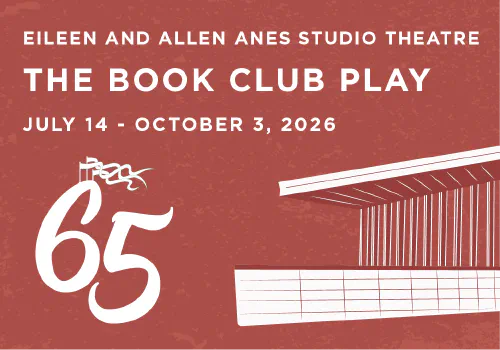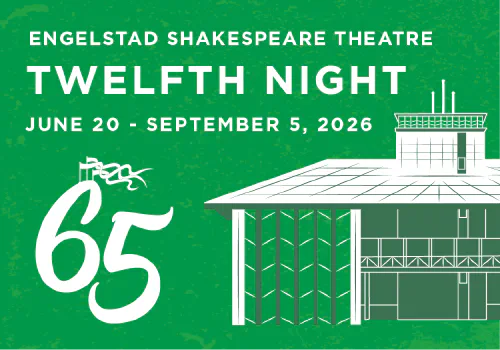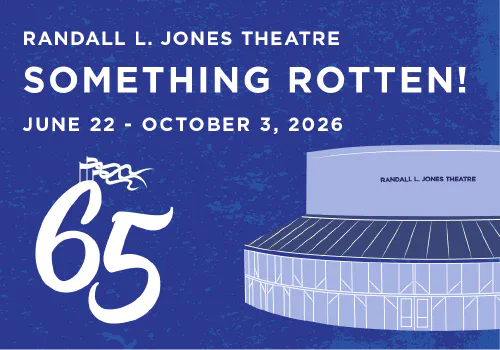A Tour of the Utah Shakespeare Festival Statue Garden

By Katie Neves, guest writer
Located just south of the Balcony Bards Seminar Grove, the Catherine and Robert Pedersen Shakespeare Character Garden is an artistic tribute to the works of William Shakespeare. Walk around the grounds, and you’ll see some of his most iconic characters in vivid detail. From tragic heroes like King Lear to the comical Falstaff, these statues bring Shakespeare’s timeless figures to life. Let’s take a closer look at each statue and the stories they tell.
William Shakespeare
Where better to start than with the Bard of Stratford on Avon himself? Born in 1564, Shakespeare wrote, acted, and produced his plays in several theatres in England, most famously the Globe Theatre in London. His works have only grown in popularity since his death over four centuries ago. In fact, he is the most performed playwright in history. Standing at a podium filled with books and facing out toward all the characters he created, this statue captures his enduring legacy as a master storyteller.
Festival Fun Fact: When the now-retired Adams Memorial Shakespeare Theatre was built in 1977, it was one of the world’s most accurate replicas of the original Globe. Its authentic design was so impressive that the British Broadcasting Company filmed a program in it in 1981 about Elizabethan theatre.
Hamlet
Perhaps Shakespeare’s best-known hero, this brooding and philosophical prince of Denmark delivers some of Shakespeare’s most famous words. From “Alas, poor Yorick” to “To be or not to be,” Hamlet delves deep into the human psyche as he seeks to avenge his father’s murder. He’s best known for his indecision and inner turmoil—traits which, ultimately, lead to his tragic end.
Festival Fun Fact: The small, pale tree behind Hamlet is known as a ghost pine. This is meant to represent the ghost of Hamlet’s father, who haunts the court of Elsinore and sets the play in motion.
Juliet
Juliet is the young heroine of one of Shakespeare’s most beloved plays. At just 13 years old, she falls deeply in love with Romeo—a star-crossed relationship that defies the bitter feud between their families. Juliet is one of Shakespeare’s most adapted characters, appearing in hundreds of operas, ballets, musicals, stage plays, paintings, animations, and live-action films.
Festival Fun Fact: This statue was modeled after USF founder Fred Adams’ oldest daughter, Dorcas Adams Woodward.
King Lear
“Blow, winds, and crack your cheeks,” this statue seems to cry, tearing his clothes and dropping his crown to the ground. He yells at the elements with all the grief and rage that Shakespeare gave him. A king of ancient England, Lear contends with evil daughters, traitorous courtiers, and his own madness as he suffers the consequences of his vanity and foolishness.
Festival Fun Fact: In 2015, USF’s production of King Lear starred acclaimed actor Tony Amendola. Audiences may recognize him from his roles in Stargate SG-1, Once Upon a Time, and Continuum.
Lady Macbeth
Ambitious and ruthless, Lady Macbeth is one of Shakespeare’s most chilling villains, known for her sinister influence over her husband. As the play progresses, the guilt of her murderous actions slowly overcomes her, and she descends into madness. This statue depicts the famous sleepwalking scene, where she desperately tries to wash King Duncan’s blood off her hands.
Festival Fun Fact: When referring to her, most theater folk call her “Lady M.” According to urban legend, the word “Macbeth” is cursed, and it’s bad luck to say it in a theater. Next year, audiences will see Lady Macbeth return to the Festival stage as a part of the 2025 season.
Falstaff
Sir John Falstaff is one of Shakespeare’s most beloved characters. Making his first appearance in Henry IV Part 1, he is a close friend and (terrible) mentor to Prince Hal. This statue depicts the famous pillow scene, where Falstaff puts a cushion on his head as a makeshift crown and pretends to be King Henry IV. As Falstaff and Hal playfully banter back and forth, Shakespeare foreshadows the heavy weight of kingship young Hal will soon have to bear.
Festival Fun Fact: According to legend, Queen Elizabeth I was distraught when Falstaff was killed offstage in Henry V. She demanded that Shakespeare write Falstaff a new play—a comedy, where he could fall in love. That, supposedly, is where The Merry Wives of Windsor comes from.
Henry V
King Henry V is Shakepseare’s most famous military leader. After learning that he has a claim to the French throne (and after a very rude gift from the French prince), Henry gathers his troops and goes to war. This statue depicts his famous St. Crispin’s Day speech, where he rallies his outnumbered soldiers before the Battle of Agincourt. In the end, he’s miraculously victorious, and returns home as King of England and heir of France.
Festival Fun Fact: USF’s last production of Henry V, in 2016, was one of the first shows to be produced in the new Engelstad Shakespeare Theater.
Cleopatra
Regal and brilliant, Cleopatra is one of Shakespeare’s most formidable heroines. As the Queen of Egypt, she wields her intelligence and charisma to navigate the battlefields of love and politics alongside her lover, the Roman general Marc Antony (remember him from Julius Caesar?). Cleopatra’s tragic fate (a bite from a venomous snake) cements her legacy as a woman who refuses to be subdued.
Festival Fun Fact: The last time the Festival produced Antony and Cleopatra was in 2006—almost 20 years ago! Audiences will see Cleopatra return next year as a part of the 2025 season.
Bottom and Puck
One of the most hilarious characters in literary canon, Bottom from A Midsummer Night’s Dream is a terrible actor who has a run-in with fairies in the woods outside Athens. As a part of a devious prank, he is transformed into a hideous donkey, and catches the eye of the bewitched fairy queen Titania. Whispering in his donkey ear is a tiny Puck—Oberon the fairy king’s loyal servant, and the mischievous menace who transforms Bottom and sets the mischief in motion.
Festival Fun Fact: This statue is the newest in the garden, and was from Festival founder Fred C. Adams’ favorite Shakespeare plays. It’s also the only statue to feature two characters (unless you count Cleopatra’s snake and Hamlet’s skull).
Bonus Statues
Titania
Moving outside the statue garden, you’ll find Titania—the enchanting Queen of the Fairies—nestled in a planter at the west entrance to the Randall L. Jones Theatre. After a fight, her husband, Oberon, magically tricks her into falling in love with Bottom—a grotesque donkey man. At the end of the play, all is resolved; she and Oberon reunite, and the fairy kingdom is at peace once more.
Festival Fun Fact: With Titania, Bottom, and Puck, A Midsummer Night’s Dream is the only Shakespeare play that has multiple statues of various characters at the Utah Shakespeare Festival.
Lear’s Head
Next to the grand staircase of the Engelstad Shakespeare Theatre you’ll see a small bronze head—the crownless head of King Lear. Unassuming and simple, this statue represents Lear as he is by the end of the play: a powerless shadow of who he once was. Lear shows the wide spectrum of the human experience—mighty to humble, sane to mad, cruel to remorseful. It’s no wonder he’s often considered Shakespeare’s most tragic hero.
Festival Fun Fact: King Lear is the only Shakespeare character who has two statues at the Utah Shakespeare Festival.
Fred C. Adams
Situated near Ellen’s Sweet Shop and Engelstad gift shop, the statue of Fred C. Adams is a tribute to the founder of the Utah Shakespeare Festival. Along with his wife Barbara, he started the Festival in 1961 and continued his work until his death in 2020. Beginning with a thin plywood stage on the grass, then moving to the Adams Memorial Theatre, and finally to the Beverley Taylor Sorenson complex as it stands today, Fred made it his life’s work to bring quality theatre to southern Utah.
Festival Fun Fact: If you look really closely, you can see the watch on his wrist is a Mickey Mouse watch—something he wore every day in real life.
As you stroll through the Utah Shakespeare Festival grounds, be sure to make a stop at the statue garden. From the haunting Lady Macbeth to the contemplative Bard himself, each figure captures an enchanting piece of Shakespeare’s literary legacy. Whether you’re a lifelong Festival enthusiast or a newcomer to the theatre, the statue garden offers a unique glimpse into the brilliant world of William Shakespeare. (Final Festival Fun Fact: come back in December and this statue garden––and the rest of the Beverley Center––will be marvelously lit with holiday lights and decor.)




